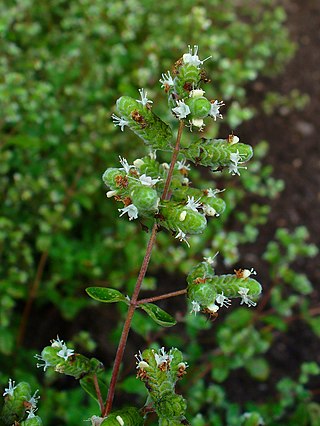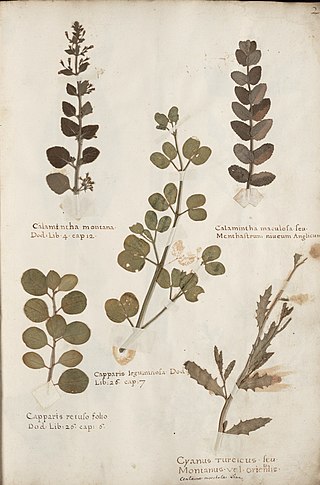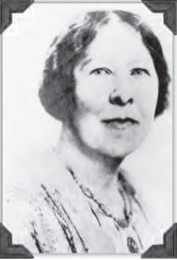This article needs additional citations for verification .(December 2022) |
The County Herb Committees were a nationwide medicinal plant collecting scheme, established by the British Ministry of Health during the Second World War.
This article needs additional citations for verification .(December 2022) |
The County Herb Committees were a nationwide medicinal plant collecting scheme, established by the British Ministry of Health during the Second World War.
The County Herb Committees were set up at a time when the German occupation of France and the disruption of shipping lanes interfered with drug supplies. As in the First World War, the British found that the Germans still largely dominated the pharmaceutical industry and consequently by the early 1940s there were critical shortages of essential medicines in hospitals and homes across Britain.
First the Vegetable Drugs Committee (VDC) of the Ministry of Supply was established in March, 1941, and the involvement of the Royal Botanic Gardens, Kew, was led by Dr. Ronald Melville, an economic botanist and pharmacist. [1]
A total of 70 Committees were set up across England, Scotland and Wales, and grants of a total of £1,191[ citation needed ] were made available to set up drying centres that could deal directly with trading companies. The first drying centre in Oxfordshire was in the home of Dr. W. O. James and his wife Gladys in the village of Islip, as well as in the Oxford Botanic Garden where they set up the Oxford Medicinal Plants Scheme. [2] By the end of the war, there were 250 drying centres across country.[ citation needed ]
The committee found that a number of imported drugs were derived from plants that were also native to Britain. By 1941 they were publishing guides for herb collectors in the rural British communities. Various groups such as Boy Scouts, Girl Guides, Women's Institutes and the elderly, were enlisted as collectors by Sir Arthur William Hill, Director of Kew.
In 1941 the wholesale pharmaceutical company Brome and Schimmer published a booklet called Herb Gathering, describing the many roots, flowers and herbs needed by the Ministry of Health, and how to collect and dry them. [3]
The National Federation of Women's Institutes cooperated with the Ministry of Supply and the County Herb Committees by collecting medicinal herbs. [4] Horticulturist Elizabeth Hess was the Agricultural Organiser for the Women's Institute. [5] The Ministry of Supply issued monthly bulletins for rural herb committees that provided information for collecting herbs in different areas. The first bulletin in 1942 described how in Derbyshire:
"The Hathersage Women's Institutes dried fifty pounds of materials chiefly nettles in the attic of a house, and the Clifton and Mayfield Boy Scouts dried seventy-six pounds of Foxglove at their headquarters. They hope to do much more this year and the county committee is looking around for drying depots."
The cardiac glycosides in foxgloves degrade if the plants are not dried carefully. A leaflet from Kew advised that collectors spread the plants on racks to dry in a coke-heated shed at 90-100 degrees Fahrenheit. [6]
A pamphlet that the Vegetable Drugs Committee published in 1941 stated that the most essential medicinal plants needed were belladonna, colchicum, digitalis, hyoscyamus, stramonium and valerian, and that the countries of origin for these plants had previously been Hungary, Italy, Germany, and Yugoslavia. [7]

Lavandula is a genus of 47 known species of perennial flowering plants in the mints family, Lamiaceae. It is native to the Old World, primarily found across the drier, warmer regions of mainland Eurasia, with an affinity for maritime breezes.

Marjoram is a cold-sensitive perennial herb or undershrub with sweet pine and citrus flavours. In some Middle Eastern countries, marjoram is synonymous with oregano, and there the names sweet marjoram and knotted marjoram are used to distinguish it from other plants of the genus Origanum. It is also called pot marjoram, although this name is also used for other cultivated species of Origanum.

Oregano is a species of flowering plant in the mint family Lamiaceae. It was native to the Mediterranean region, but widely naturalised elsewhere in the temperate Northern Hemisphere.

A botanical garden or botanic garden is a garden with a documented collection of living plants for the purpose of scientific research, conservation, display, and education. It is their mandate as a botanical garden that plants are labelled with their botanical names. It may contain specialist plant collections such as cacti and other succulent plants, herb gardens, plants from particular parts of the world, and so on; there may be glasshouses or shadehouses, again with special collections such as tropical plants, alpine plants, or other exotic plants that are not native to that region.

A herbarium is a collection of preserved plant specimens and associated data used for scientific study.

Medicinal plants, also called medicinal herbs, have been discovered and used in traditional medicine practices since prehistoric times. Plants synthesize hundreds of chemical compounds for various functions, including defense and protection against insects, fungi, diseases, and herbivorous mammals.

Victory gardens, also called war gardens or food gardens for defense, were vegetable, fruit, and herb gardens planted at private residences and public parks in the United States, United Kingdom, Canada, Australia and Germany during World War I and World War II. In wartime, governments encouraged people to plant victory gardens not only to supplement their rations but also to boost morale. They were used along with rationing stamps and cards to reduce pressure on the food supply. Besides indirectly aiding the war effort, these gardens were also considered a civil "morale booster" in that gardeners could feel empowered by their contribution of labor and rewarded by the produce grown. This made victory gardens a part of daily life on the home front.

Digitalis purpurea, the foxglove or common foxglove, is a toxic species of flowering plant in the plantain family Plantaginaceae, native to and widespread throughout most of temperate Europe. It has also naturalized in parts of North America, as well as some other temperate regions. The plant is a popular garden subject, with many cultivars available. It is the original source of the heart medicine digoxin. This biennial plant grows as a rosette of leaves in the first year after sowing, before flowering and then dying in the second year. It generally produces enough seeds so that new plants will continue to grow in a garden setting.

Kampo or Kanpō medicine, often known simply as Kanpō, is the study of traditional Chinese medicine in Japan following its introduction, beginning in the 7th century. It was adapted and modified to suit Japanese culture and traditions. Traditional Japanese medicine uses most of the Chinese methods, including acupuncture, moxibustion, traditional Chinese herbology, and traditional food therapy.

Sophie Emma Magdalene Grieve, also known as Maud, Margaret, Maude or Mrs. Grieve, was the principal and founder of The Whins Medicinal and Commercial Herb School and Farm at Chalfont St. Peter in Buckinghamshire, England.

Digitalis lanata, vernacularly often called woolly foxglove or Grecian foxglove, is a species of foxglove, a flowering plant in the plantain family Plantaginaceae. It gets its name due to the woolly indumentum of the leaves. D. lanata, like other foxglove species, is toxic in all parts of the plant. Symptoms of digitalis poisoning include nausea, vomiting, severe headache, dilated pupils, problems with eyesight, and convulsions at the worst level of toxicity. The plant is also harmful to other animals.

Yusuf ibn Ismail al-Kutubi known as Ibn al-Kutubi a Persian scholar and physician worked as a doctor in the palaces of the Abbasid caliphs in Baghdad. He was born in Khoy in Iran.

Chamaemelum nobile, commonly known as chamomile, is a low perennial plant found in dry fields and around gardens and cultivated grounds in Europe, North America, and South America. Its synonym is Anthemis nobilis, with various common names, such as Roman chamomile, English chamomile, garden chamomile, ground apple, low chamomile, mother's daisy or whig plant. C. nobile is one source of the herbal product known as chamomile using dried flowers for flavoring teas or as a fragrance used in aromatherapy. Chamomile has no established medicinal properties.

Kailas Nath Kaul (1905–1983) was an Indian botanist, naturalist, agricultural scientist, horticulturist, herbalist, plant collector and herpetologist, and a world authority on Arecaceae. He founded India's National Botanical Research Institute and was instrumental in organizing the country's modern scientific infrastructure. He is regarded as a vital influence behind his niece Indira Gandhi's proactive role in environmental protection by means of extensive legislative and policy interventions.

Herbs are a widely distributed and widespread group of plants, excluding vegetables and other plants consumed for macronutrients, with savory or aromatic properties that are used for flavoring and garnishing food, for medicinal purposes, or for fragrances. Culinary use typically distinguishes herbs from spices. Herbs generally refers to the leafy green or flowering parts of a plant, while spices are usually dried and produced from other parts of the plant, including seeds, bark, roots and fruits.

World War Zoo gardens is a research project and recreation of a wartime "dig for victory" garden, created at Newquay Zoo in 2009 based on those created in many a zoo and botanic garden throughout Britain and Europe during and after World War II. The gardens project won a BIAZA national zoo award in November 2011.

Daniel Hanbury FRS was a British botanist and pharmacologist. He was an early student of pharmacognosy, the study of the medicinal applications of nature, principally of plants.

Botanical expeditions are scientific voyages designed to explore the flora of a particular region, either as a specific design or part of a larger expedition. A naturalist or botanist would be responsible for identification, description and collection of specimens. In some cases the plants might be collected by the person in the field, but described and named by a government sponsored scientist at a botanical garden or university. For example, species collected on the Lewis and Clark Expedition were described and named by Frederick Traugott Pursh.

Alicia Margaret Tyssen Amherst, Baroness Rockley was an English horticulturist, botanist, and author of the first scholarly account of English gardening history.
Geoffrey Emett Blackman (1903-1980) was the Sibthorpian Professor of Rural Economy at the University of Oxford from 1945 to 1970 and Director of Agricultural Research Council Unit of Experimental Agronomy from 1950 to 1970.